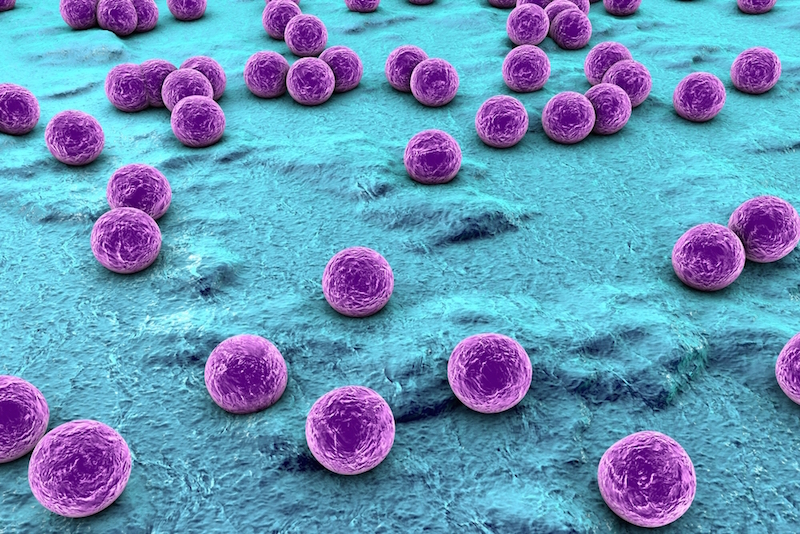New Map Tracks Germs' Travels Around Hospitals

In the first study of its kind, researchers have conducted a yearlong survey of the bacteria in a newly constructed hospital, starting two months before the facility opened and continuing over the next 10 months.
Initial results of the Hospital Microbiome Project, published today (May 24) in the journal Science Translational Medicine, provide an unprecedented map of the microbial communities that inhabit a hospital — on the patients, the staff and the surfaces. The study also gives researchers foundational information that could improve the understanding of hospital-acquired infections, the researchers said.
"We are mapping a new world in the hospital so that we can understand the trade routes, if you will, of microbes moving in that space," said study senior author Jack Gilbert, director of the Microbiome Center at the University of Chicago. [Body Bugs: 5 Surprising Facts About Your Microbiome]
The map of the hospital, the Center for Care and Discovery at the University of Chicago Medicine, is not a typical two-dimensional projection of a physical space, Gilbert said. Rather it is a "multidimensional, mathematical hypervolume of interactive space."
The map shows not only where the microbes are, but also how they tend to move around. "It helps me to see the pathway by which things move, so I can use that information to understand the dynamics of interacting organisms much more readily."
Those dynamic interactions occur because in general not a day goes by when a person is not picking up organisms from one place and dumping them in another, Gilbert said. In the microscopic world of microbial communities, some organisms gain a foothold in one place and die in another, and they can even evolve into antibiotic-resistant organisms, such as Staphylococcus aureus andStaphylococcus epidermidis, he said.
Over the course of the year at the hospital, Gilbert and his team focused on 10 noncritical carerooms on two different floors and two nurse stations, one that provided care to surgical patients and another that provided care to cancer patients. In the rooms, the researchers collected samples from multiple surfaces, including the floor, bed rail, door handles and phones.
Get the world’s most fascinating discoveries delivered straight to your inbox.
Patients who gave consent were also swabbed, with samples taken from hands, nostrils and armpits. Finally, the nursing staff allowed samples to be taken from their hands, gloves and shoes, as well as from countertops, pagers, shirts, chairs, computers, landlines and cellphones.
In all, the researchers collected 6,523 microbial samples from 252 patients.
From the very beginning, the team saw interesting trends, the researchers said. Before the hospital opened on Feb. 23, 2013, most of the bacterial organisms in the building were those commonly found in the soil and water, such as Acinetobacter and Pseudomonas.
But after the hospital opened, the soil and water microbes were quickly replaced by those typically found on human skin, such as Corynebacterium, Staphylococcus and Streptococcus.
The staff disinfected rooms daily with an ammonium cleaning solution, and after a patient wasdischarged, the room was cleaned with bleach. Despite this, some microbes survived. [5 Ways Gut Bacteria Affect Your Health]
"You've got this horribly alien environment. It's basically raining humans and animals and plants down onto a volcanic island," Gilbert said. "It's a horrible environment, and only a few [microbes] are ever going to survive."
Those that lived tended to move from a room's surfaces onto a new patient on that person's first day in the hospital, the study found. By the second day, though, the patient's own microbes began colonizing the room's surfaces, replacing the bacteria from the previous person.
Gilbert and his team said they encountered a couple of surprises: During the heat and humidity of summer, staff members shared more bacteria with one another.
The scientists also found that different surfaces contained different kinds of microbes. The organisms on telephones were different from those on door handles and computer mice. This shows that although bacterial organisms come from common sources, each of the microenvironments somehow selects for distinct microbes, Gilbert said.
"That helps us consider the different surface materials and what their impact could be on the ecosystems," he said.
This information could provide a foundation for future studies that look specifically at infections that patients acquire after being admitted to a hospital, Gilbert added.
For 92 patients in the study who were in the hospital for months, some potentially harmful bacteria, including Staphylococcus aureusand Staphylococcus epidermidis, acquired genes associated with antibiotic resistance, the study said. Although the patients did not acquire infections, microbes with antibiotic resistance genes were present in the room in numbers that were greater on surfaces than on skin. [6 Superbugs to Watch Out For]
Most of the microbes that Gilbert and his team found were benign, though, and unlikely to cause any problems.
"If anything, this study is an education to all of the germaphobes out there," Gilbert said. "You're swimming in bacteria and most of them are dead, but there's a lot of them that are alive and there's not much you can do about it."
Originally published on Live Science.





